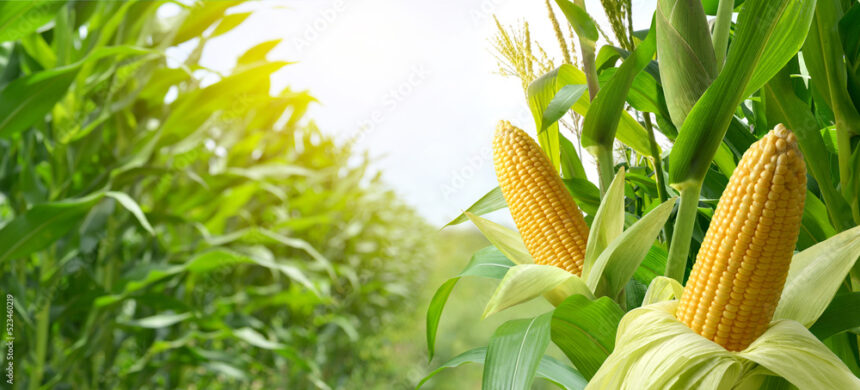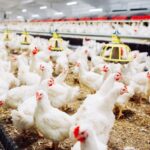Running a profitable maize farm in South Africa requires careful planning, investment in appropriate equipment and infrastructure, and a thorough understanding of market dynamics. This guide provides detailed insights on key factors to ensure your maize farming venture thrives.
1. Equipment Needed for Maize Farming
Essential Equipment
- Tractors: Invest in reliable tractors for land preparation, planting, and harvesting.
- Planters: Use modern seed planters for accurate seed placement and optimal spacing.
- Harvesters: Consider using combine harvesters to efficiently harvest maize crops.
- Irrigation Systems: Depending on rainfall patterns, invest in efficient irrigation systems, such as drip or center pivot irrigation.
Additional Equipment
- Tillage Equipment: Include plows and harrows for soil preparation.
- Sprayers: Equip yourself with sprayers for pest and weed management.
- Storage Facilities: Ensure adequate storage for harvested maize to prevent spoilage.
2. Land Size Requirements
Ideal Land Size
- Small-Scale Operations: A minimum of 5-10 hectares can support small-scale maize production.
- Commercial Operations: For large-scale farming, consider 50-100 hectares or more to maximize output and economies of scale.
Land Management
- Crop Rotation: Practice crop rotation to maintain soil health and reduce pest infestations.
3. Infrastructure Essentials
Infrastructure Development
- Storage Facilities: Build silos or warehouses to store maize and protect it from pests and moisture.
- Access Roads: Develop good access roads to facilitate transportation of inputs and harvested maize.
Irrigation Infrastructure
- Water Supply Systems: Establish efficient water supply systems for irrigation, especially in dry areas.
4. Revenue Generation
Potential Revenue Streams
- Sale of Maize: Generate revenue primarily from selling harvested maize to local markets or processing plants.
- Value-Added Products: Consider processing maize into products like maize meal or animal feed to increase revenue.
Pricing Strategy
- Market Analysis: Stay informed about market prices to set competitive pricing for your maize.
5. Costs of Maize Farming
Initial Costs
- Equipment Purchase: Invest in essential machinery and tools for planting and harvesting.
- Land Preparation: Costs for land clearing, plowing, and fertilization.
Ongoing Costs
- Seeds and Fertilizers: High-quality seeds and fertilizers constitute significant ongoing expenses.
- Labor: Budget for labor costs for planting, maintenance, and harvesting.
6. Risks in Maize Farming
Common Risks
- Climate Variability: Droughts or excessive rainfall can severely impact yields; monitor weather conditions closely.
- Pests and Diseases: Infestations can devastate crops; implement integrated pest management strategies.
Risk Mitigation Strategies
- Insurance: Consider agricultural insurance to protect against crop losses due to adverse weather or disease outbreaks.
- Diversification: Diversify crops to mitigate risks associated with maize farming.
7. Strategic Planning for Profitability
Setting Goals
- Short-Term Goals: Focus on establishing a reliable production system and securing funding.
- Long-Term Goals: Aim for expansion, sustainability, and market leadership.
Business Planning
- Comprehensive Business Plan: Develop a detailed business plan outlining your production, marketing, and financial strategies.
8. Efficiency and Productivity
Operational Efficiency
- Precision Agriculture: Utilize precision farming techniques to optimize inputs and increase yields.
- Labor Management: Train staff in best practices to improve efficiency and productivity.
Productivity Improvement
- Soil Health Management: Regularly test soil and apply appropriate fertilizers to maintain soil health and fertility.
- Hybrid Seeds: Invest in high-yield hybrid seeds to enhance production.
9. Market Analysis
Understanding Market Demand
- Local Demand: Analyze local market demand for maize and adjust production accordingly.
- Consumer Trends: Stay updated on trends in maize consumption and preferences.
Marketing Strategy
- Brand Development: Build a brand that emphasizes quality and sustainability to attract customers.
- Direct Sales Channels: Explore direct sales opportunities, such as local markets or contracts with processors.
10. Financial Management
Budgeting and Forecasting
- Budget Creation: Develop a detailed budget to track expenses and income effectively.
- Cash Flow Management: Monitor cash flow regularly to ensure operational sustainability.
Record Keeping
- Documentation: Maintain accurate records of expenses, revenues, production processes, and crop health for informed decision-making.
11. Growth and Investment Strategies
Growth Opportunities
- Increasing Acreage: Consider expanding land under cultivation as demand for maize grows.
- Diversification: Explore diversifying into other crops or value-added products to enhance revenue streams.
Investment in Technology
- Modern Farming Techniques: Invest in advanced agricultural technologies, such as drones for monitoring crop health or soil sensors.
12. Funding Opportunities
Available Funding Sources
- Government Grants: Research government programs that offer financial assistance to maize farmers.
- Agri-Financial Institutions: Consider loans from agricultural banks, such as the Land Bank or Development Bank of Southern Africa.
Crowdfunding and Partnerships
- Crowdfunding Platforms: Utilize crowdfunding to raise capital for expansion or innovative projects.
- Collaborations: Form partnerships with local businesses or cooperatives to share resources and reduce costs.
13. Strategic Planning for the Future
Long-Term Vision
- Market Positioning: Define your unique selling propositions (USPs) and establish a strong market presence.
- Sustainability Goals: Integrate sustainable practices in your operations to appeal to environmentally conscious consumers.
Regular Review
- Performance Analysis: Regularly assess your business performance against strategic goals to identify areas for improvement.
Adapting to Change
- Flexibility: Stay adaptable to changing market conditions, regulations, and consumer preferences.
Running a profitable maize farm in South Africa involves strategic planning, investment in the right resources, and a deep understanding of the agricultural landscape. By focusing on equipment, infrastructure, market dynamics, and effective financial management, farmers can achieve sustained profitability and contribute positively to the agricultural sector. With the right strategies and commitment, maize farming can be a thriving venture in South Africa’s agricultural environment.
Join 'Farmers Mag' WhatsApp Channel
Get the latest Farming news and tips delivered straight to your WhatsApp
CLICK HERE TO JOIN






